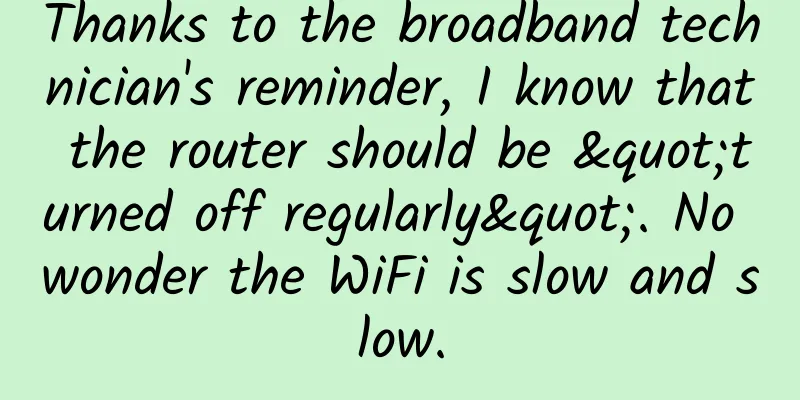Internet of Things technology ushers in the "three-horse" era: Cat 1 medium-speed positions are converted to regular positions, and you're done!

|
If the previous exploration and practice of different IoT connection technologies by the industry and users were predictions based on multi-dimensional considerations of speed, latency, network coverage, technology maturity, cost, etc. for different application scenarios; then, the "Notice on Deepening the Comprehensive Development of Mobile Internet of Things" (hereinafter referred to as the "Notice") issued by the Ministry of Industry and Information Technology this week can be regarded as an official announcement by the industry's competent authorities on the selection of IoT connection technologies for different scenarios in the future.
The launch of the new IoT policy further points out the direction of IoT connection technology migration. We can already be sure that after 2G/3G retires, NB-IoT, LTE-Cat 1 and 5G will become the "three horses" driving the development of future IoT connection technology, jointly detonating the IoT industry. Among them, Cat 1 has become a regular player in the medium-speed IoT connection market. So, how can Cat 1 take on such a big role in the medium-speed market? What preparations have industry manufacturers made for the coming of the Cat 1 era? What challenges will it face in the future? Official offer: Medium speed is the job of Cat 1! The author believes that this new IoT policy has accurately grasped the evolution trend of global mobile IoT technology standards and industrial structure, and provided clear and high-level guidance. The overall goal of the "Notice" is to promote the migration and network transfer of 2G/3G IoT services, and establish a comprehensive mobile IoT ecosystem with coordinated development of NB-IoT, 4G (including LTE-Cat1) and 5G; on the basis of deepening 4G network coverage and accelerating 5G network construction, NB-IoT will be used to meet most low-speed scenario needs, Cat 1 will be used to meet medium-speed IoT needs and voice needs, and 5G technology will be used to meet higher-speed and low-latency networking needs; and for the first time, it clearly guides new IoT terminals to no longer use 2G/3G networks, and promotes the migration of existing 2G/3G IoT services to NB-IoT/4G (Cat1)/5G networks. According to the classification of high, medium and low network speeds, the distribution of cellular IoT connections is roughly a "136" ratio, with 10% "high speed", 30% "medium speed" and 60% "low speed". The low-speed and medium-speed scenarios previously involved in 2G/3G account for more than 90% of the total. Taking 2G as an example, data from market research firm Counterpoint shows that as of the end of 2019, the number of IoT connections of the three major domestic operators was about 1.15 billion, of which 2G accounted for about 42% and carried nearly 500 million connections. On the one hand, the window period for the replacement of old and new cellular IoT connection technologies has arrived, and the 2G/3G network withdrawal has entered the countdown. On the other hand, who will take over the massive IoT connection market left after the 2G/3G network withdrawal? After 2G is withdrawn from the network, NB-IoT will meet the needs of large-scale narrowband and low-rate scenarios with its wide coverage, low power consumption, low cost, and large connections. It will be used in small data volume and low-rate scenarios such as smart meter reading, but NB-IoT cannot meet low-rate scenarios that require voice. After 3G is withdrawn from the network, 4G LTE and eMTC will be able to carry mainly voice and medium-rate scenarios, but domestic operators are not active in eMTC, and the eMTC industry chain is not open or robust enough. In the short term, it will be difficult to realize network construction of eMTC in China. Therefore, 4G LTE will take on the responsibility of medium-rate connection scenarios in the Internet of Things. Although medium-speed scenarios in the Internet of Things connected by LTE can be supported by Cat 1 and Cat 4, industries such as public network intercom, sharing economy, financial payment, wearable/tracking, smart energy, and industrial control require certain speeds (medium and low speeds are sufficient, with a downlink speed of less than 10Mbps and an uplink speed of less than 5Mbps), meet certain high-speed mobile needs, are sensitive to latency, support voice, and pay more attention to low cost and low power consumption. For such LTE Internet of Things industry connection needs that do not require high network speeds but require stability, reliability, and low cost, if Cat 4 with a maximum uplink speed of 50Mbps and a maximum downlink speed of 150Mbps is used, the huge bandwidth redundancy is like using a cannon to kill a mosquito. Moreover, the current mainstream Cat 4 is difficult to meet the above-mentioned industry needs with high requirements for module cost and power consumption in terms of power consumption and price. Cat 1 takes into account the advantages of performance (downlink speed up to 10Mbps, uplink speed up to 5Mbps), power consumption, cost (nearly 30% lower cost than Cat 4), and comprehensive network coverage, and is more suitable for medium-speed scenarios with voice requirements, especially medium- and low-speed scenarios. The launch of this new IoT policy is equivalent to the official offer. In the future, medium-speed IoT connection scenarios with voice needs will be the work of Cat 1! The camp is growing: more players, more investment The new IoT policy also reiterated that mobile IoT is an important part of the new infrastructure, making all parties in the industry chain generally optimistic about the industry's prospects. The joint efforts of the upstream and downstream of the industry chain have also objectively promoted the smooth introduction of the new IoT policy, and the introduction of the new policy will further enhance the confidence of the industry chain and increase investment. Among them, chips are the core link of the IoT industry chain. Currently, mainstream chip suppliers including Qualcomm, Unigroup Spreadtrum, ASR, Yixin, and CoreWing Information have already launched a number of Cat 1 chips, which not only reduce module costs for downstream module manufacturers, but also help enterprises and industry users quickly realize the commercialization of IoT products. As the intermediate link between upstream standardized chips and downstream highly fragmented vertical application fields, modules are crucial to the industry application and innovation of Cat 1 in the Internet of Things market. At present, almost all module manufacturers in China have their own Cat 1 module products. Recently, module manufacturers such as SIMCom, Quectel, Fibocom, Mega Smart, Yike Communication, UIoT, and Xinwei Communication have all released new Cat 1 modules. Together with China Mobile IoT, Neoway Technology, and Gosuncn IoT, the camp of players in the Cat 1 module market is growing. It is reported that in the next few months, more new Cat 1 modules will be released on the market. Accelerating volume growth: price war may become more intense Previously, industry information agency TSR predicted that Cat 1 will maintain rapid growth, and the average annual shipments of LTE modules in the global market will reach more than 80 million units in the next few years, while the average annual shipments of Cat 1 modules will maintain more than 30 million units in the future. With the introduction of new IoT policies, industry users in medium-speed, especially medium- and low-speed IoT scenarios will accelerate their migration to Cat 1, and the Cat 1 market size will also accelerate. The price of Cat 1 modules in the market has dropped rapidly to 45-60 yuan. For example, a few days ago, some manufacturers released Cat 1 modules at a shocking price of 45 yuan for a limited time. In the future, as competition becomes increasingly fierce, in order to take the lead in the market, be in a favorable competitive position, and gain first-mover advantage, chip manufacturers may launch Cat 1 chips with higher cost performance, and the price of Cat 1 modules may continue to fall. On the one hand, this is because in terms of cost, most electronic products follow Moore's Law, with higher and higher integration, and the scale effect will definitely further drive the continuous decline of product costs; on the other hand, although the Cat 1 market has just begun, with the introduction of the new IoT policy, the direction of IoT technology migration is very clear and the orientation is very clear, which has injected strong policy measures for the next step of the industry chain to concentrate resources and accelerate the promotion of IoT applications. Everyone believes that the future demand for Cat 1 modules will soon explode, and the cost of products will definitely drop rapidly. Therefore, some manufacturers who are eager to occupy a position may adopt the future cost calculation and pricing model in advance to gain more market share. Moreover, all industry manufacturers have expressed that they will continue to increase their investment in Cat 1. |
<<: What does cutover mean in network engineering?
>>: A brief comparison of two SR-TE implementation methods
Recommend
[Black Friday] CMIVPS: 50% off on all VPS annual payments, 30% off on top-up
CMIVPS has launched its last big promotion this y...
How difficult it is to increase network speed and reduce fees
In response to the livelihood issue of "spee...
my country's broadband users reach 510 million: 100M rate reaches 91.5% and Gigabit users exceed 14 million
[[419885]] What's the bandwidth of your home ...
Huawei Connect 2017 previews: Emphasis on cloud implementation and practice
[51CTO.com original article] As a global ICT indu...
TCP retransmission problem troubleshooting ideas and practices
1. About TCP retransmission TCP retransmission is...
Network streaming media protocol - RTSP protocol
RTSP (Real-Time Stream Protocol) is a text-based ...
80VPS: Los Angeles VPS starts at 199 yuan per year, 8C (237 IP) cluster server starts at 800 yuan per month
80VPS is a long-established Chinese hosting compa...
RackNerd Cyber Monday special VPS starts at $8.49 per year, multiple data centers available
Black Friday is followed by Cyber Monday, and t...
Home users use routers to surf the Internet, so how many mobile phones can be connected to one router at most?
I think everyone is still curious about this ques...
Neighbors and adjacencies in OSPF: a single word can lead to a huge difference
What you call a "neighbor" relationship...
Three major operators: New York Stock Exchange maintains delisting decision
On the evening of May 7, the three major operator...
After working for more than 6 years, I still don’t understand the principles and techniques of coroutines
[[432311]] Preface Hello, my friends! Dabai has w...
edgeNAT 50% off in the US West Coast, 30 yuan/month KVM-1GB/20GB/500GB/Los Angeles data center
The tribe has shared news about edgeNAT twice. Th...
Hostio: €5/month KVM-2GB/25GB/5TB/Netherlands data center
Hostio is a foreign hosting company founded in 20...
Wu Hequan: 5G's key performance has not yet been reflected in the application end. This year's positioning accuracy will be increased to 0.3 meters
[[375297]] Recently, Wu Hequan, an academician of...









